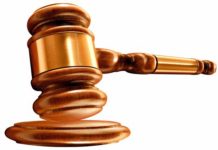 The shift to EVs is rapidly underway. Businesses need to prepare now to unlock the opportunity presented, says Zap-Map Chief Technology Officer, Dr. Ben Lane
The shift to EVs is rapidly underway. Businesses need to prepare now to unlock the opportunity presented, says Zap-Map Chief Technology Officer, Dr. Ben Lane
Zap-Map’s origins lie in a car website, nextgreencar.com, founded in 2008 to help drivers navigate what was a very different world – covering everything from environmental performance, to cost and tax issues.
In 2011, with Tesla and Nissan beginning to ramp up production, it became clear that finding charging locations was a key challenge for drivers. “So starting small, we developed a map and put it on the website,” says Chief Technology Officer, Dr. Ben Lane.
“After a couple of years, it became clear the type of traffic and user on that part of the site was completely different, so we span it out, rebranded and Zap-Map was born.”
Driver data
Today, Zap-Map is a software company. As well as providing real time information on charging locations and availability to drivers, it provides data to numerous industry sectors.
Lane says there are “now well over 100,000 registered users on the app,” which is about 90 per cent of the UK’s ‘pure’ or non-hybrid electric vehicle drivers. Those users add their own data to the app, such as vehicle type, where they keep the car overnight, their route plans, etc.
That anonymised data is increasingly valuable to enable policymakers, regulators, network operators and chargepoint providers to build out more efficient and robust charging networks, says Lane.
Convergence
In March 2019, Good Energy took a 12.9 per cent stake in Zap-Map, which has since risen to 50.1 per cent. Given the convergence of transport and energy, Good Energy’s investment was well timed, says Lane.
“It means we can invest in the team and the product. But also, Good Energy is the right type of investor for us, given they are a supplier and generator with lots of clean energy assets. We can help them extend into the EV space, and they have taught us a lot about the energy sector.”
Equally, he says, for a company with its roots in green transport, “it makes sense to align with a partner that is working toward the same goal with the same strategic vision. Because going forward, the two sectors are going to be highly integrated”.
Prepare now
Given the pace of change, Lane urges businesses that have not yet installed EV infrastructure to move quickly.
“If you are not yet totally convinced about EVs and the change that is underway, install one or two chargers and start gauging your customer and employee reaction,” he says.
“If you are a manager and your CEO hasn’t grasped the enormity of what is coming, call a board meeting, lock the doors and do not leave the room until the CEO fully understands that you must prepare for an electric future by 2030 at the latest,” says Lane. “You need to get on the case now.”
Paramount, he says, is to present the business opportunities presented by EVs. “You must start that thinking and planning this year to benefit from those opportunities,” he says, “or the rest of the world will change around you.”
Putting businesses on the map
Many businesses installing charge points are making it central to marketing plans. Zap-Map and Good Energy can help improve charge point visibility to ensure drivers know chargers are available, says Lane, and develop offers with networks to help drive footfall.
Zap-Pay: No more juggling payment apps
This summer, Zap-Map will launch payment functionality, which aims to solve interoperability issues that have dogged EV drivers in the UK.
Until now, ‘walled gardens’ mean drivers often have to download different aps or carry cards for different networks. By integrating with charge point operators, Zap-Pay will solve this issue, says Lane.
A fleet version that allows drivers to flip between personal and business use is also in development.
 Free report: EVs and charging infrastructure for businesses
Free report: EVs and charging infrastructure for businesses
To learn more about EVs, charging infrastructure, and how other businesses are tackling the road ahead, download your free copy of Good Energy’s latest EV white paper here.



